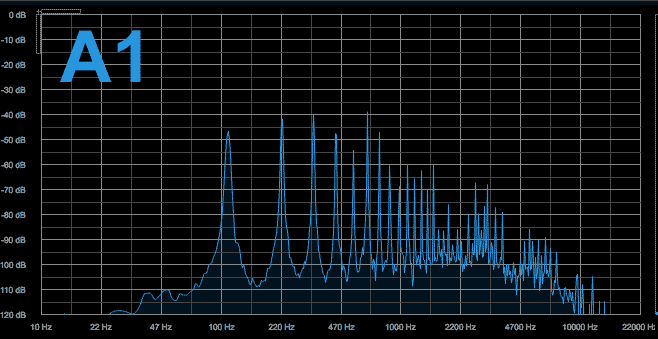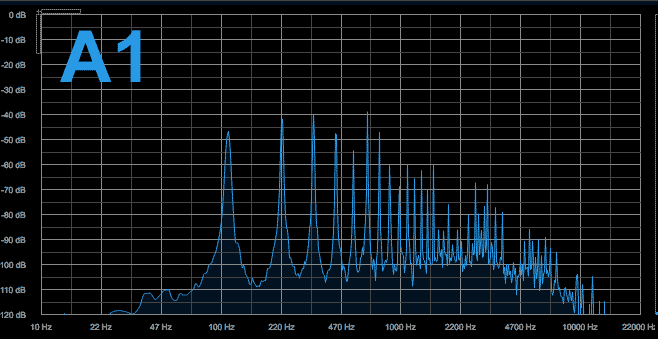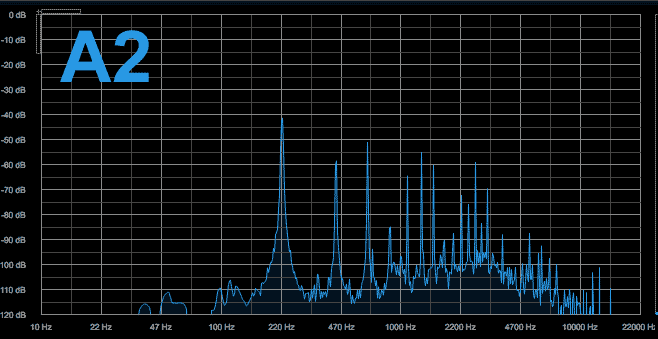Obviously we often use the words tone & sound interchangeably, but when you are learning an instrument like the saxophone, it’s very useful to consider them separately.

We tend to associate tone with expression, and sometimes confuse the two. Even the word “tone” is confusing. It can be used to mean the sound you get when you merely blow down the saxophone without adding anything extra, or it can mean the sound you get after you have applied various techniques, such as vibrato or dynamics.
I find it useful to think of them as associated but different. A player needs first to develop a good solid tone, and then to enhance it by adding expression. In other words, you could argue that there is no point in having a great expressive technique if your basic tone is poor. Tone, then, is something similar to what we mean when we alter the tone controls of a sound system (though in that case, we might use different words such as “treble” or “bass”). Additionally, this raw tone of the instrument can be said to have other, less easy to define parameters, such as focus, projection or spread.
I often hear people who try to emulate one of the greats, and the first mistake they make is to think the instrument set up (saxophone and mouthpiece) is the crucial factor. In some cases it can be important, but far more important is that player’s sound. Many great players will get their “trademark” sound whatever saxophone or mouthpiece they play, partly because they can control the tone but often because the sound they add to the tone is what comes across more prominently.
OK, so the equipment has some bearing on the tone you can produce. This obviously includes the saxophone itself, and possibly to a greater extent, the mouthpiece and reed. But what is it that makes one player get a different sound from the same equipment as another?
There are various things including (most importantly):

Taming The Saxophone Vol I - Tone Without Tears. All the tone exercises on the site and lots more Buy Now
Minute changes in your lower lip pressure and position can make all the difference, as can good breath support. We will discuss breath support in the chapter on breathing but what you actually do to control and alter your basic tone is not so easy to pin down.
These changes in lower lip position and pressure are too small to accurately describe; however, as you gain control over those muscles by significant and focussed long note practice, the almost unconscious manipulation of those muscles will become second nature. It is good to experiment with different types of embouchure, over the years many great teachers have suggested what is right, often disagreeing with each other (e.g. Larry Teale vs Joe Allard). So you may be confused by the conflicting advice you see and hear on the internet where there is a lot of misinformation. One thing I suggest is that if you have a good teacher, follow what they say as opposed to what you read on the internet.
As you progress you will become more able to change and make decisions about this for yourself. For example it is worth experimenting with the position of your lower lip on the reed, (ie how much mouthpiece you take in). The ideal amount can vary from player to player depending on the style of music, their physical make-up, and the style of music. We look at that in more depth in the embouchure page.
All of these parameters are often associated with properties of a specific instrument, rather than techniques applied by the player. However, by working on all the exercises here, anyone should be able to attain the skills necessary to shape those parameters beyond what is “defined” by the equipment.
These are the aspects of your tone & sound which will really help you either get your own personal sound, or emulate one of your favourite players. Find out more about how to gain control over these in More advanced tone control exercises.
All of the above can be added to the basic tone you get to create a personal sound, add expression or emotion and help you gain mastery over a technique that is every bit as important as the fingering techniques you need to learn in order to master the saxophone.

Analysis of A1 – A2

A1 to A1 with subtone

A1 to A2 (1st overtone of A1)

A2 to A2 (1st overtone of A1)

- Tone: you can think of this as the “raw” unprocessed sound of your saxophone.
- Sound: this is the end result after you have used your technique as a musician to manipulate the tone into something that an be more personal or expressive.
We tend to associate tone with expression, and sometimes confuse the two. Even the word “tone” is confusing. It can be used to mean the sound you get when you merely blow down the saxophone without adding anything extra, or it can mean the sound you get after you have applied various techniques, such as vibrato or dynamics.
I find it useful to think of them as associated but different. A player needs first to develop a good solid tone, and then to enhance it by adding expression. In other words, you could argue that there is no point in having a great expressive technique if your basic tone is poor. Tone, then, is something similar to what we mean when we alter the tone controls of a sound system (though in that case, we might use different words such as “treble” or “bass”). Additionally, this raw tone of the instrument can be said to have other, less easy to define parameters, such as focus, projection or spread.
I often hear people who try to emulate one of the greats, and the first mistake they make is to think the instrument set up (saxophone and mouthpiece) is the crucial factor. In some cases it can be important, but far more important is that player’s sound. Many great players will get their “trademark” sound whatever saxophone or mouthpiece they play, partly because they can control the tone but often because the sound they add to the tone is what comes across more prominently.
OK, so the equipment has some bearing on the tone you can produce. This obviously includes the saxophone itself, and possibly to a greater extent, the mouthpiece and reed. But what is it that makes one player get a different sound from the same equipment as another?
There are various things including (most importantly):
- Embouchure & Air support
- Dynamics
- Pitch
- Articulation

Taming The Saxophone Vol I - Tone Without Tears. All the tone exercises on the site and lots more Buy Now
Embouchure & Breath
Minute changes in your lower lip pressure and position can make all the difference, as can good breath support. We will discuss breath support in the chapter on breathing but what you actually do to control and alter your basic tone is not so easy to pin down.
These changes in lower lip position and pressure are too small to accurately describe; however, as you gain control over those muscles by significant and focussed long note practice, the almost unconscious manipulation of those muscles will become second nature. It is good to experiment with different types of embouchure, over the years many great teachers have suggested what is right, often disagreeing with each other (e.g. Larry Teale vs Joe Allard). So you may be confused by the conflicting advice you see and hear on the internet where there is a lot of misinformation. One thing I suggest is that if you have a good teacher, follow what they say as opposed to what you read on the internet.
As you progress you will become more able to change and make decisions about this for yourself. For example it is worth experimenting with the position of your lower lip on the reed, (ie how much mouthpiece you take in). The ideal amount can vary from player to player depending on the style of music, their physical make-up, and the style of music. We look at that in more depth in the embouchure page.
All of these parameters are often associated with properties of a specific instrument, rather than techniques applied by the player. However, by working on all the exercises here, anyone should be able to attain the skills necessary to shape those parameters beyond what is “defined” by the equipment.
Dynamics, pitch & articulation
These are the aspects of your tone & sound which will really help you either get your own personal sound, or emulate one of your favourite players. Find out more about how to gain control over these in More advanced tone control exercises.
- Dynamics – this is more than just playing varying the dynamics within a piece of music loud or quiet, or playing it loud or quiet. In regard to your sound it can mean varying the dynamic within a ingle note, either by crescendo or diminuendo.
- Pitch– again, this doesn’t just mean playing in tune.
- Playing slightly above or below the pitch (but not enough to actually sound out of tune) can make quite a difference to the sound.
- Pitch is also involved in vibrato. We know that the pitch changes as the vibrato waves go up or down, but the actual sound can be shaped depending the depth and rate of vibrato, whether it is constant or only affects part of the note.
- Bending the note, whether at the beginning, end or middle, all adds to creation of a sound.
- Articulation – a huge part of the tone & sound. It may not seem so, but a listener perceives the overall sound differently depending on the initial attack of the note.
All of the above can be added to the basic tone you get to create a personal sound, add expression or emotion and help you gain mastery over a technique that is every bit as important as the fingering techniques you need to learn in order to master the saxophone.
Comparing Notes

Analysis of A1 – A2

A1 to A1 with subtone

A1 to A2 (1st overtone of A1)

A2 to A2 (1st overtone of A1)
Last edited:




